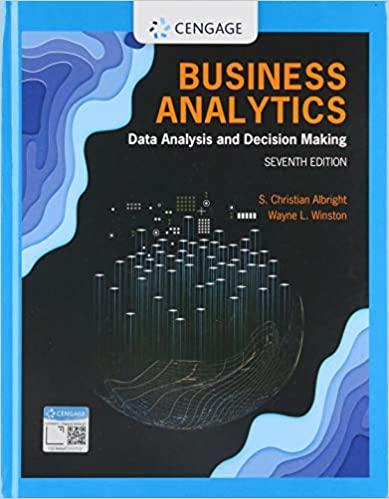Question
In recent years, two concepts entered the emergency management dialogue: sustainability and resilience. What is the definition of sustainability? A simple definition (derived from various
In recent years, two concepts entered the emergency management dialogue: sustainability and resilience. What is the definition of sustainability? A simple definition (derived from various dictionaries and FEMA) is the ability to (1) maintain or continue functioning at the same level, or (2) use resources in ways that do not deplete or permanently damage them.
Sustainability usually comes to mind when you think about emergency management fundingspecifically, grants that provide short-term financial assistance to
- establish new programs, such as community emergency response teams (CERTs) or medical reserve corps (MRC)
- educate the public about preparedness
- buy new equipment
- hire new employees
One of the most difficult issues emergency managers face is finding ways to continuesustainthese initiatives when the funding stream ends. The concept of sustainability also applies to disaster recovery and is important if we want our recovery efforts to be anything more than short-term. Without sustainable recovery planning, we risk repeating past mistakes.
What about resilience? What is the definition and how does it relate to sustainability? We associate resilience with the ability to bounce back following adversityto recover quickly. Although recovery following disaster does not always progress as fast as we would like, it should not prevent us from working to restore the community's essential functions as soon as possible.
To make a correlation between resilience and sustainability, think of it this way: A disaster-resilient and sustainable community is one that can recover quickly while maintaining and preserving the resources it needs to function. Continue Building Community Resilience...
Read Below:
- Sheppard, B., Janoske, M. and Liu, B. (2012) Understanding risk communication theory: A guide for emergency managers and communicators, Report to Human Factors/Behavioral Sciences Division, Science and Technology Directorate, U.S. Department of Homeland Security. College Park, MD: START; This document reflects the themes and concepts developed in the accompanying Understanding Risk Communication Best Practices: A Guide for Emergency Managers and Communicators. This report discusses and dissects theories and models relevant to federal, state, and local homeland security personnel and emergency managers faced with communicating risks within their communities. It first provides a detailed discussion on defining risk communication, followed by risk characteristics to summarize how perceived dread and familiarity can affect risk messaging. Next, relevant theories and models1 are discussed in two parts: cross-cutting theories and models applicable across the preparedness, response, and recovery phases, and then additional theories and models that are most relevant within a specific event phase. As with the Best Practices document, many of the communication approaches presented were not originally designed for a specific event phase, but nevertheless offer valuable insights that make them particularly suitable for a specific event phase.
Read via Hyperlink:
- Katsikopoulos, P. (2020). Individual and community resilience in natural disaster risks and pandemics (covid-19): risk and crisis communication; Civil Protection and disaster risk specific agencies legally responsible to enhance individual and community resilience, still utilize in their risk and crisis communication efforts, the "deficit model" even though its basic assumption and approach have been criticized. Recent studies indicate that information seeking behavior is not necessarily a measure of enhanced individual preparedness. A qualitative change from "blindly" following directions to practicing emergency planning and becoming your own disaster risk manager is required. For pandemics, the challenge is even more complicated due to their unique characteristics.
- DHS. (2020). Tips for effectively communicating with the whole community in disasters; The Federal Emergency Management Agency (FEMA) and its federal partners remain in close coordination with state, local, and tribal governments to coordinate and provide resources as needed in connection with preparedness, response, recovery and mitigation associated with Hurricane Harvey impacting Texas and Louisiana.
- Lindsey, B. (2016). Social media for emergencies and disasters: Overview and policy considerations;The term "social media" refers to Internet-based applications that enable people to communicate and share resources and information. Some examples of social media include blogs, discussion forums, chat rooms, wikis, YouTube channels, LinkedIn, Instagram, Facebook, and Twitter. Social media can be accessed by computers, tablets, smart and cellular telephones, and mobile telephone text messaging (SMS). The use of social media is an evolving phenomenon. Rapid changes in communication technologies in the past decade have enabled people to interact and share information through media that were non-existent or widely unavailable as recently as 15 years ago.2
Review the information related to risk communication in emergency management and communication in COVID-19. Understanding risk communication theory: A guide for emergency managers and communicators What theories, social factors, and best practices stand out to you the most?
(B) Would these be applicable to settings you have been looking at for your project or case study? (choose a few to share!) Use the example provided in COVID-19 or another disaster to highlight issues that could have been improved by applying the theories and the recommendations from the Congressional Research Service report on social media and disasters.
Step by Step Solution
There are 3 Steps involved in it
Step: 1

Get Instant Access to Expert-Tailored Solutions
See step-by-step solutions with expert insights and AI powered tools for academic success
Step: 2

Step: 3

Ace Your Homework with AI
Get the answers you need in no time with our AI-driven, step-by-step assistance
Get Started


